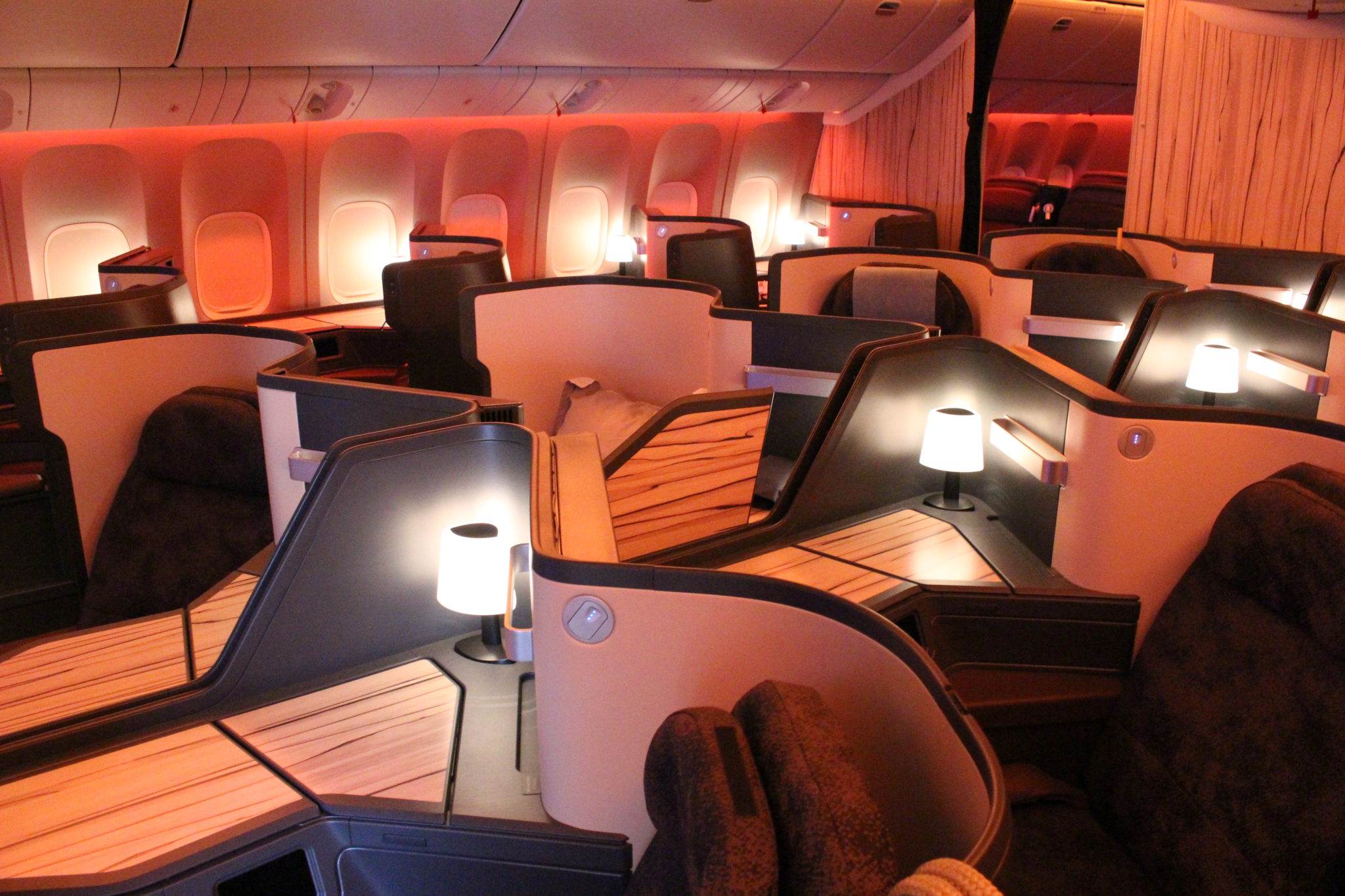Flight Review: China Airlines 777-300ER Business Class Review (TPE to NRT)

Introduction | China Airlines Business Class
I got to the airport from Regent Taipei approximately around 7:20am due to severe rain and some cylical traffic from Taipei. Nevertheless, it was a relaxing ride via the taxi and costed me 1,300 TWD. Upon entering the terminal though, I was surprised to see how busy and packed it was. Goodness, there were so many people in the mornings!
Checking in via business class meant using the SkyPriority plane, which took about 3-5 minutes from getting an agent to getting my ticket in hand. She also gave me my China Airlines lounge access and suggested the lounge closer to D4, which was a great choice. While I didn’t have a chance to snag a few photos of the lounge, rest assured - it’s a great place to be, as you could shower and have some famous Taiwanese beef noodles while you wait for your flight!
Business Class Seat | Seat 12K
As mentioned in my previous review of China Airlines Business Class (SFO to TPE), these business class seats are designed from Collins Aerospace and are the Super Diamond format, which is what Qatar Airways and Garuda Indonesia uses. This take is tailor cut by the genius-mind of Ray Chen, who utilized a series of warm wooden tones to help make it a warm and intimate cabin. I do believe that this is still one of the nicest looking business class seats out there.
Similar to the flight from San Francisco, the seats are incredibly premium and felt very spacious. This time around, I was able to snag my favorite seat (12K). With the window seat, you get a wide table surface that features the beautiful table lamp, alongside some reading materials. The side tables open up to reveal two shallow cabinets, and houses the entertainment remote control, power outlets, a series of USB-B plugs and the headphones. I’m always a fan of their plush-looking seat and the luxurious fabric that cover the seat, making it not only beautiful in form, but functional as well.
On the other side of the seat, there are two additional storage cabinets, with the first being in the aisle-facing armrest. This is the armrest that also can be adjusted depending on your comfort level when sleeping, and acts somewhat as a wall against any unwanted dumps during your sleep. There is also a small compartment that is meant to fit a bottle of water. Across the seat is the 18” touch screen TV, along with the tray table that pulls out from under the screen.
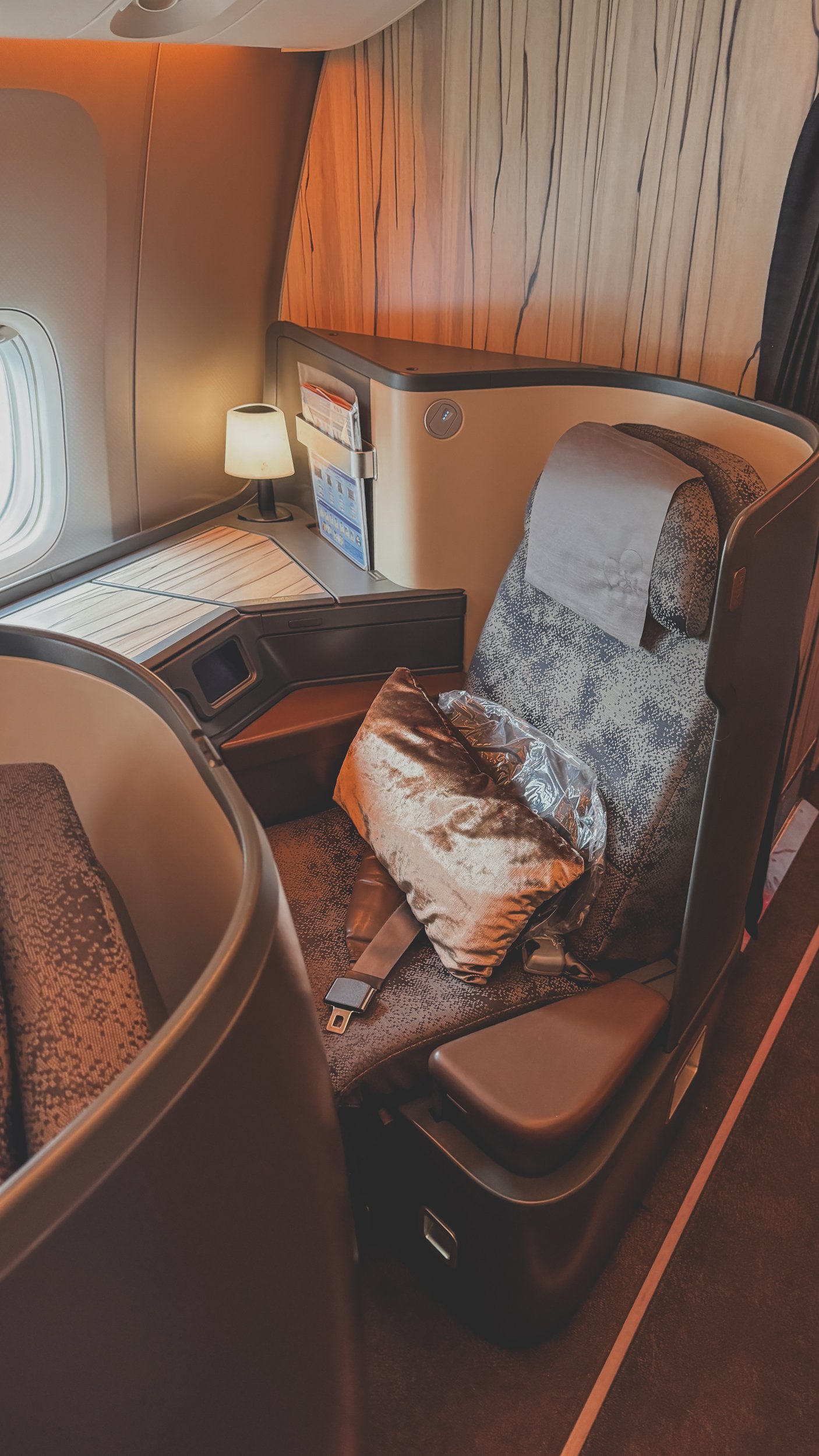

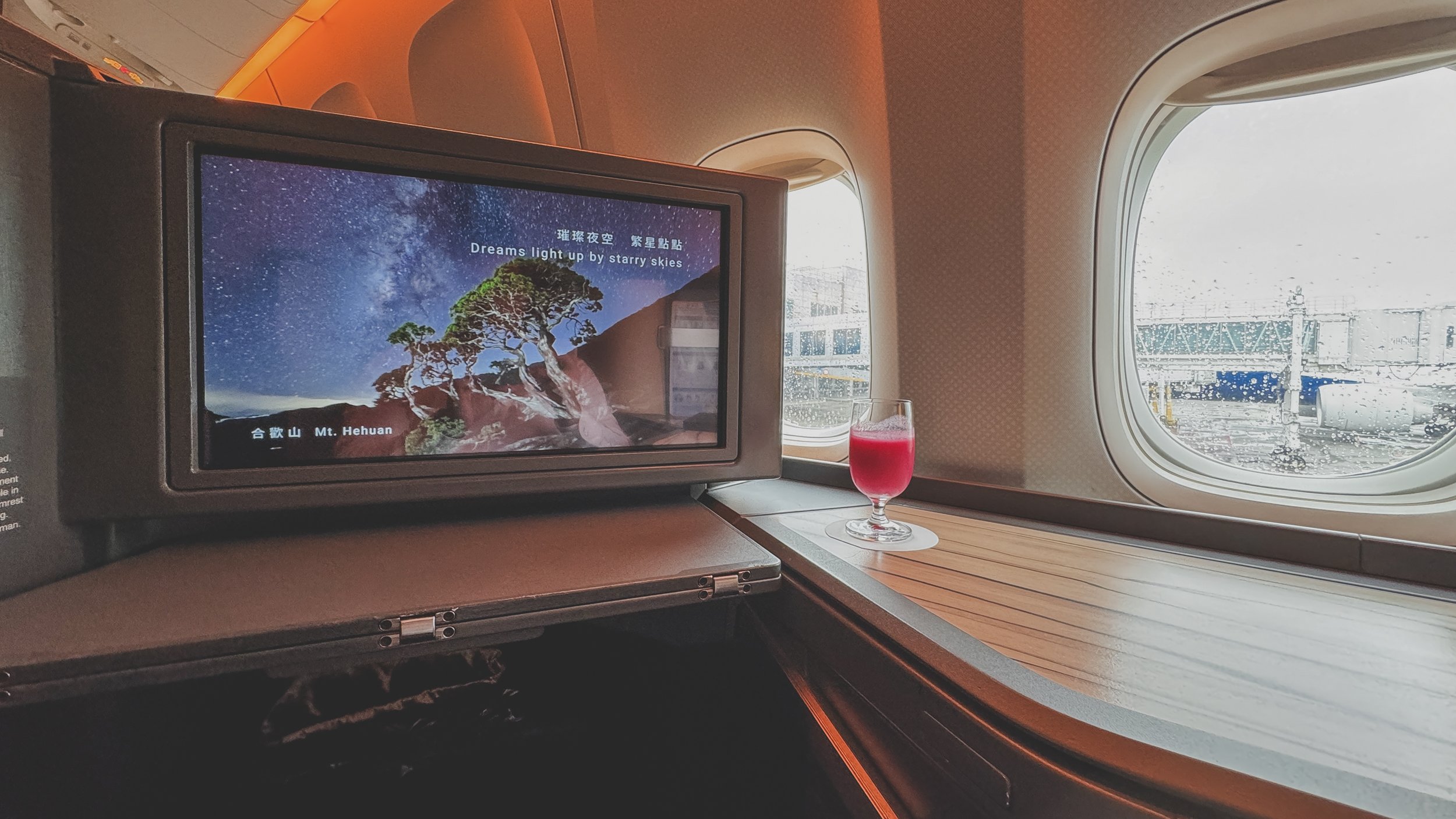
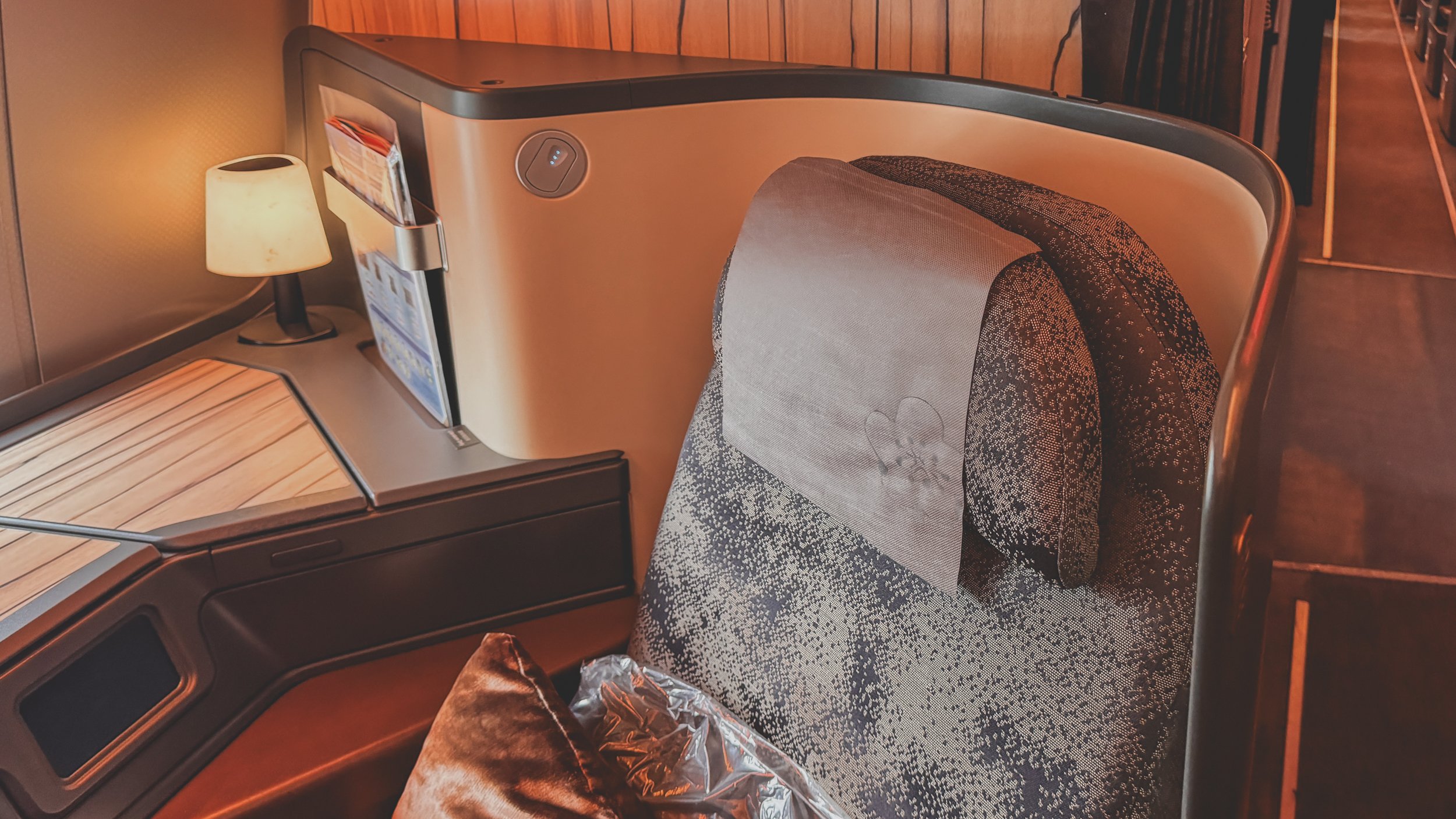
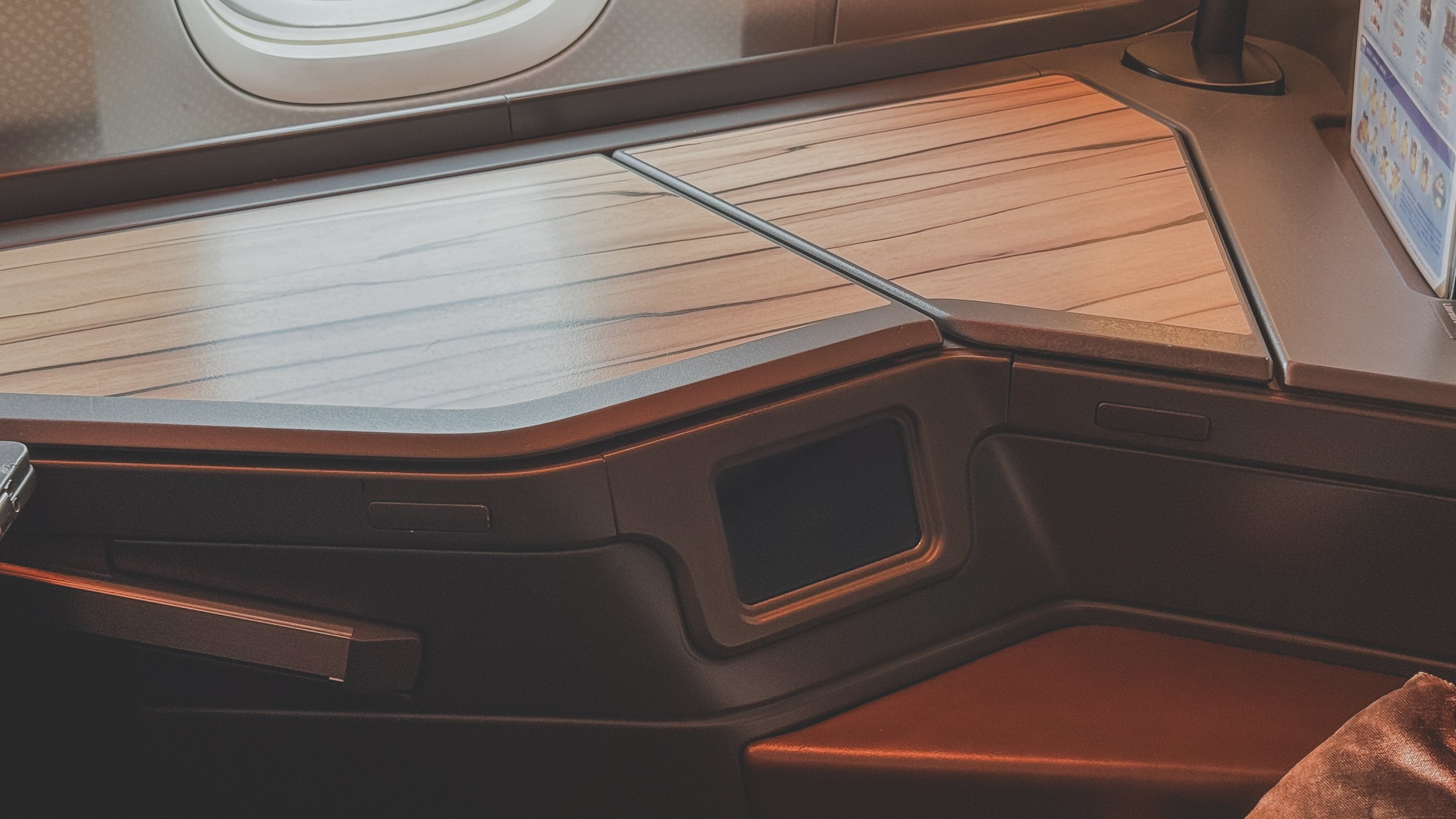
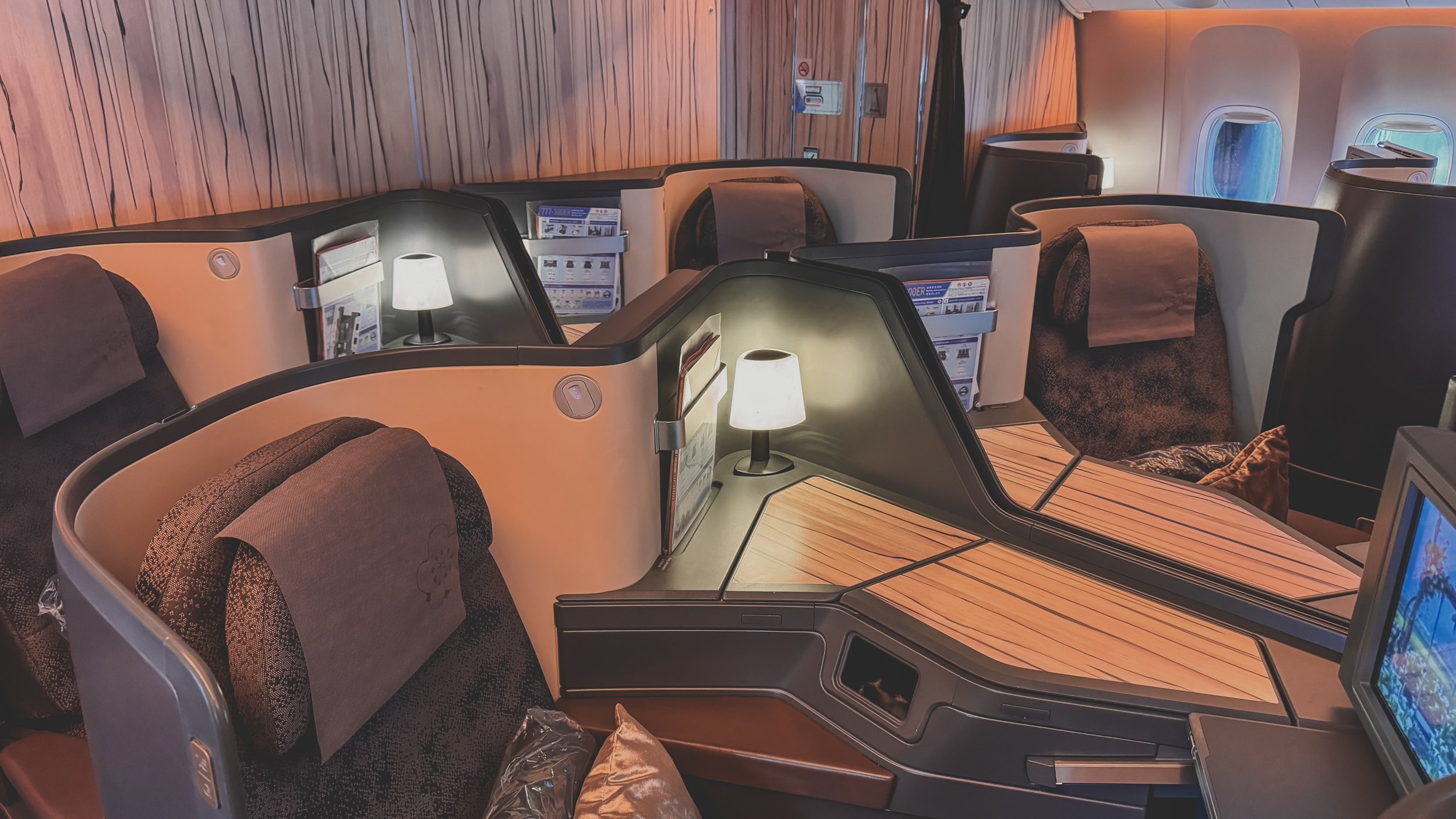

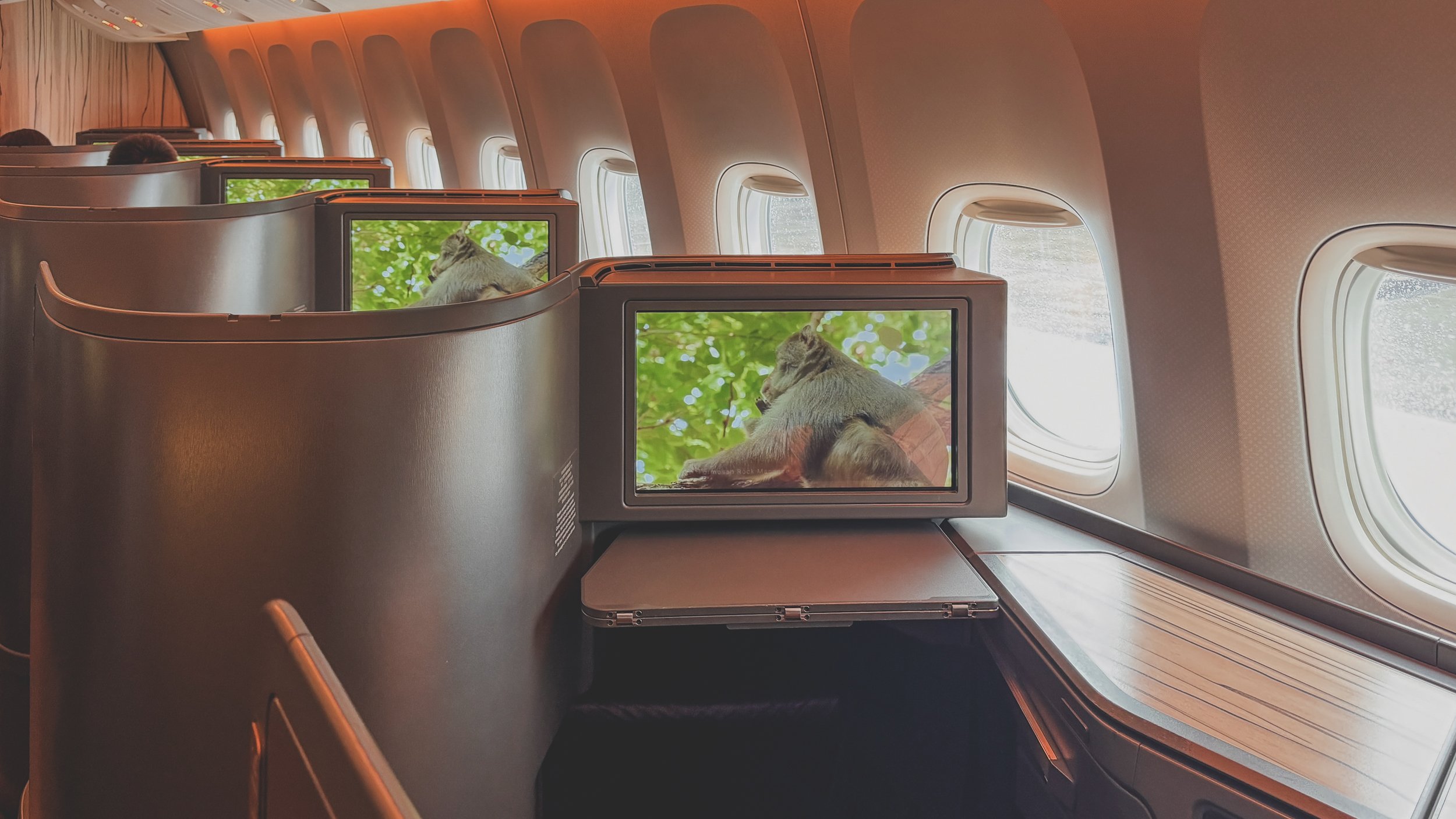
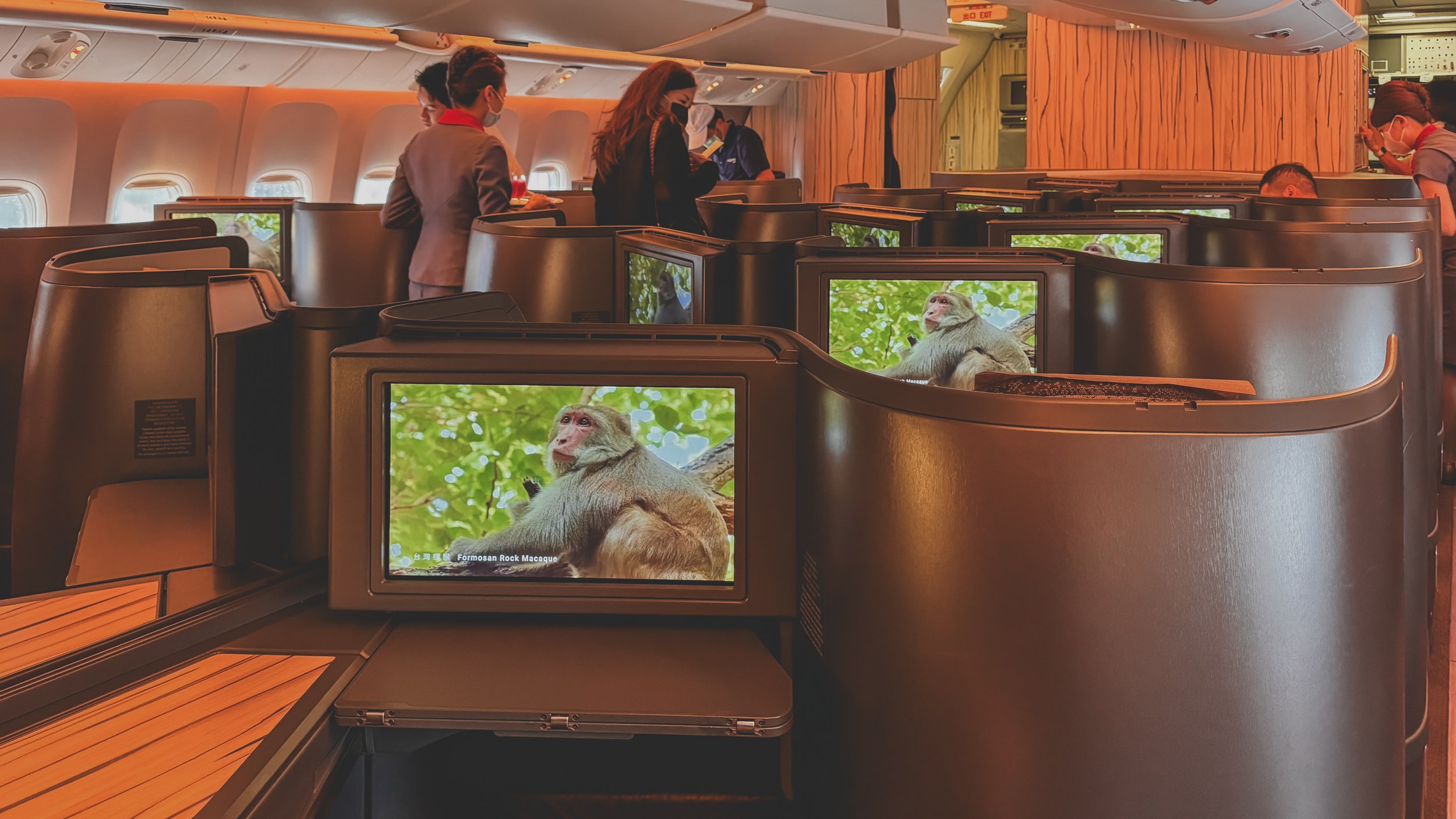
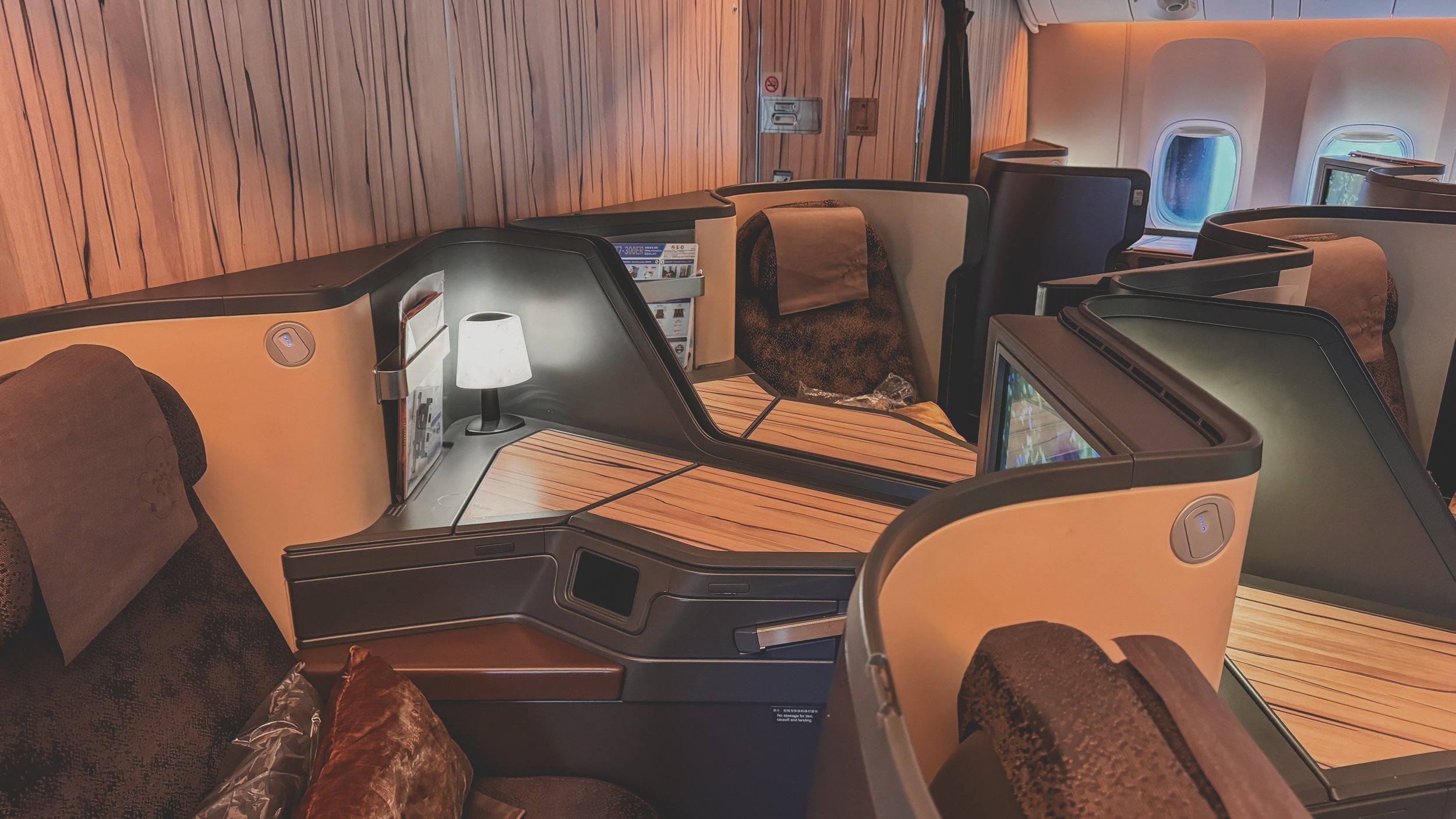
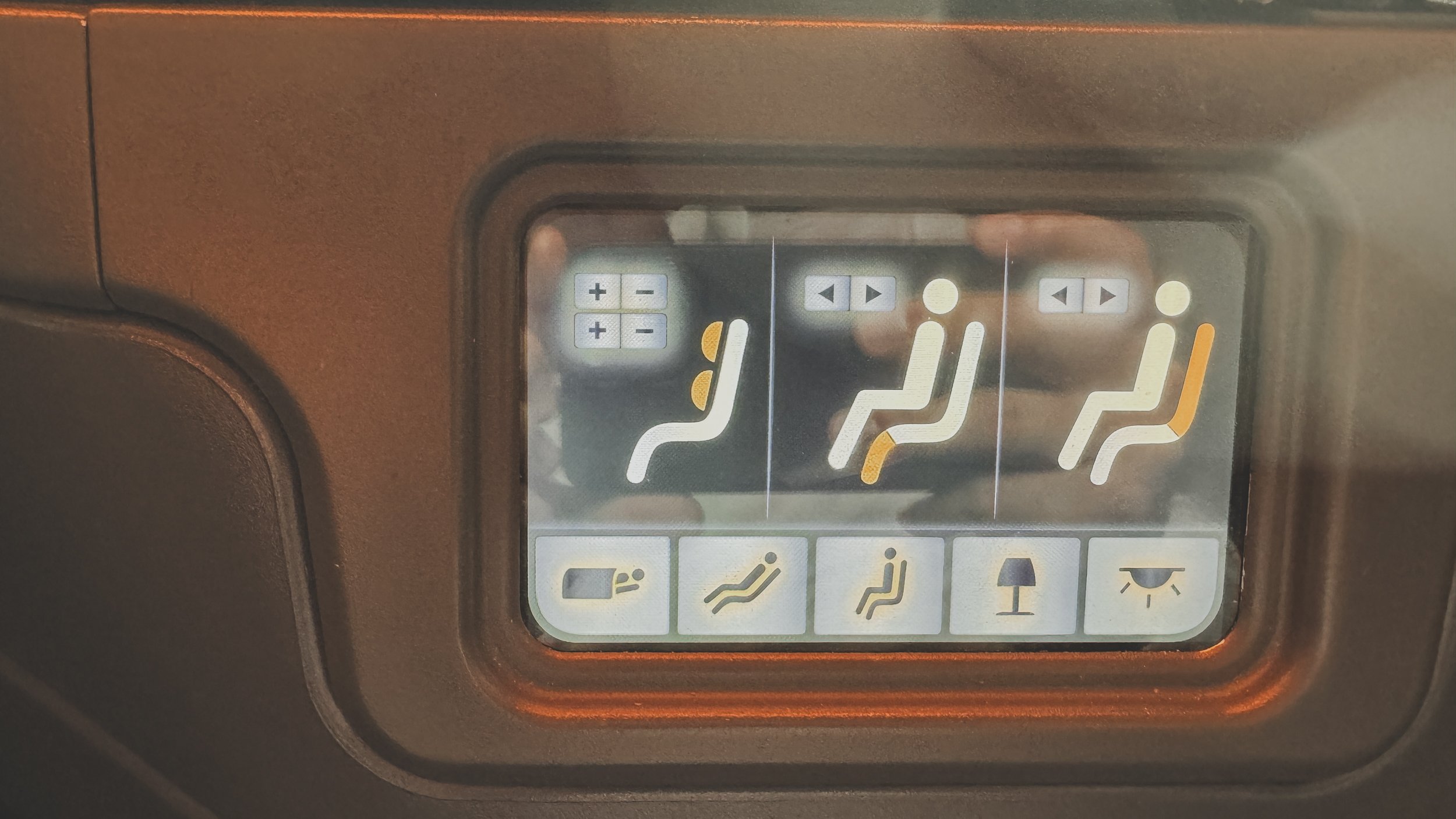
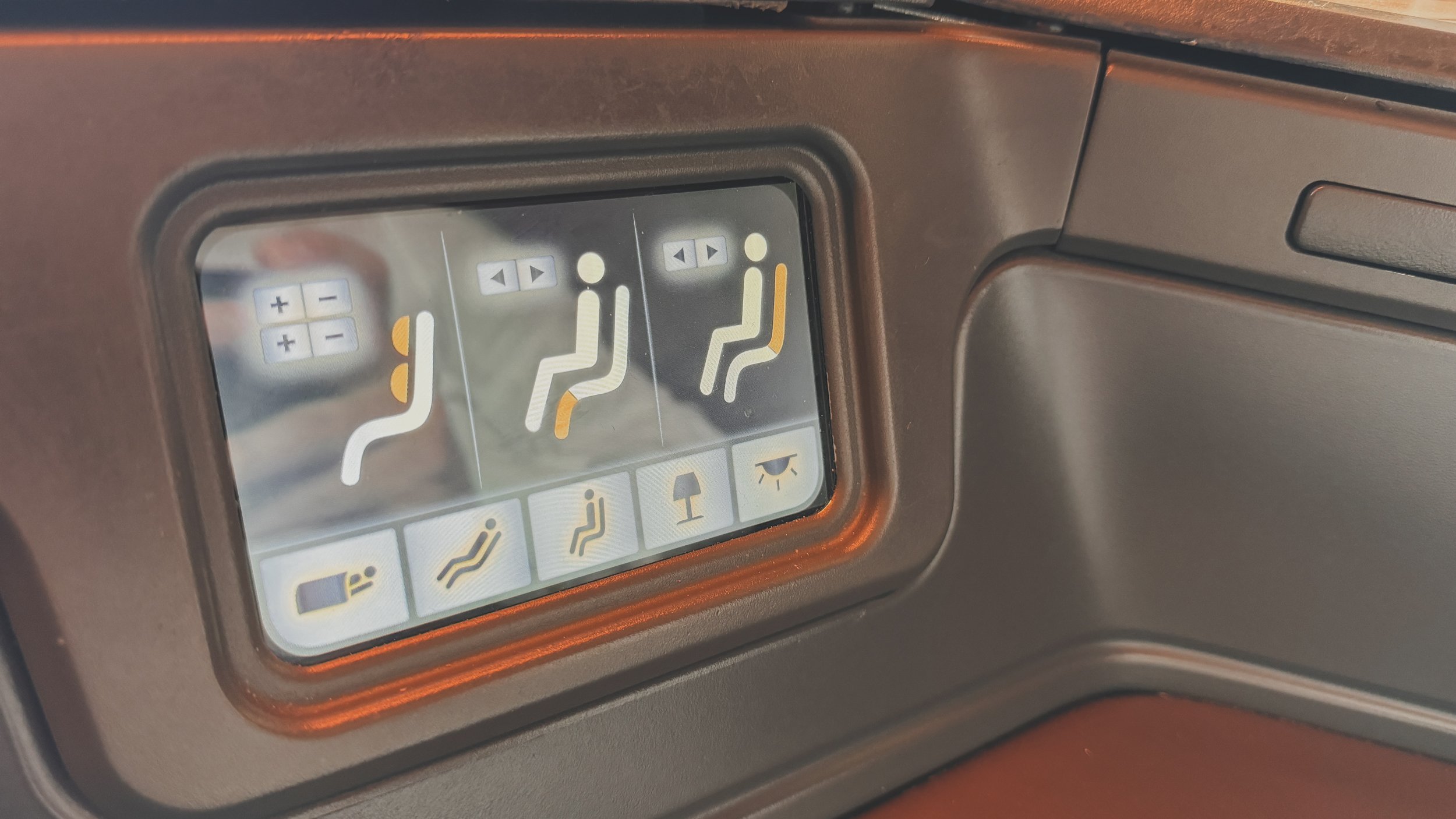
Like the A350, the 700ER seat also contains the aisle-facing armrest that usually fits the amenity kit or a water bottle, though oddly enough we weren’t given a water bottle or amenity kit on this flight to Japan. Dang it. The armrest can be extended upwards to function as an arm rest if needed.
The Business Class is separated into two cabins, with the main cabin taking up space from 10-16, and then a mini-cabin which contains 16 more seats featuring the same layout. For what it’s worth, both cabins are fantastic, though I still prefer the front cabin due to its proximity and the ease of access to multiple bathrooms, which is always a plus!
As we were taxing out, I couldn’t help but notice the lovely Eva Airlines x Sanrio collaboration aircraft, which I really want to fly next year. It’s such a cute livery and couldn’t help chuckle when some of the passengers were also rushing to take pictures of the aircraft.
Food & Beverage | China Airlines
The greeting drink for this trip was a glass of mixed juice which was quite delicious, and the flight attendant eagerly kept pouring me more, despite my hilarious attempts of saying no more. Hot towels were distributed and boy were these hotter than the ones from SFO to TPE, YIKES!
An interesting pivot point - the menus here were actually not handed out and was taken back, to my slight surprise. It may be that I already ordered ahead of time, but was kind of surprised by the lack of a menu. It may be due to the short flight time, but then again - as a business class flight, I was expecting the standard across their routine. Nevertheless, when the service began, the crew closed all the windows and turned on their mood lighting and served me a cup of coffee and some snacks.
I chose the Japanese option and I did not regret it ONE BIT.
This beautifully design meal was served Teishoku-style (bento box) and had all the dishes that contained elements of a train bento. Served with miso soup, a side of white rice and some pickles, this was one of the most elegant business class meal I’ve seen in a while. The red container contained a small dish of fomadofu and a dish of small bites, which were so delicious. The second container contained a series of beef, fish and an omelet, which instantly melted in my mouth. The quality of these dishes rank right next to Japan Airline’s business class meals - I can only imagine what their competitors are about to do next!
Dessert was a classic fruit and classic sweet cake, along with an Alishan green tea, which matched well with the sweetness of the fruits. This was truly a great finish to an exceptional meal to Japan!
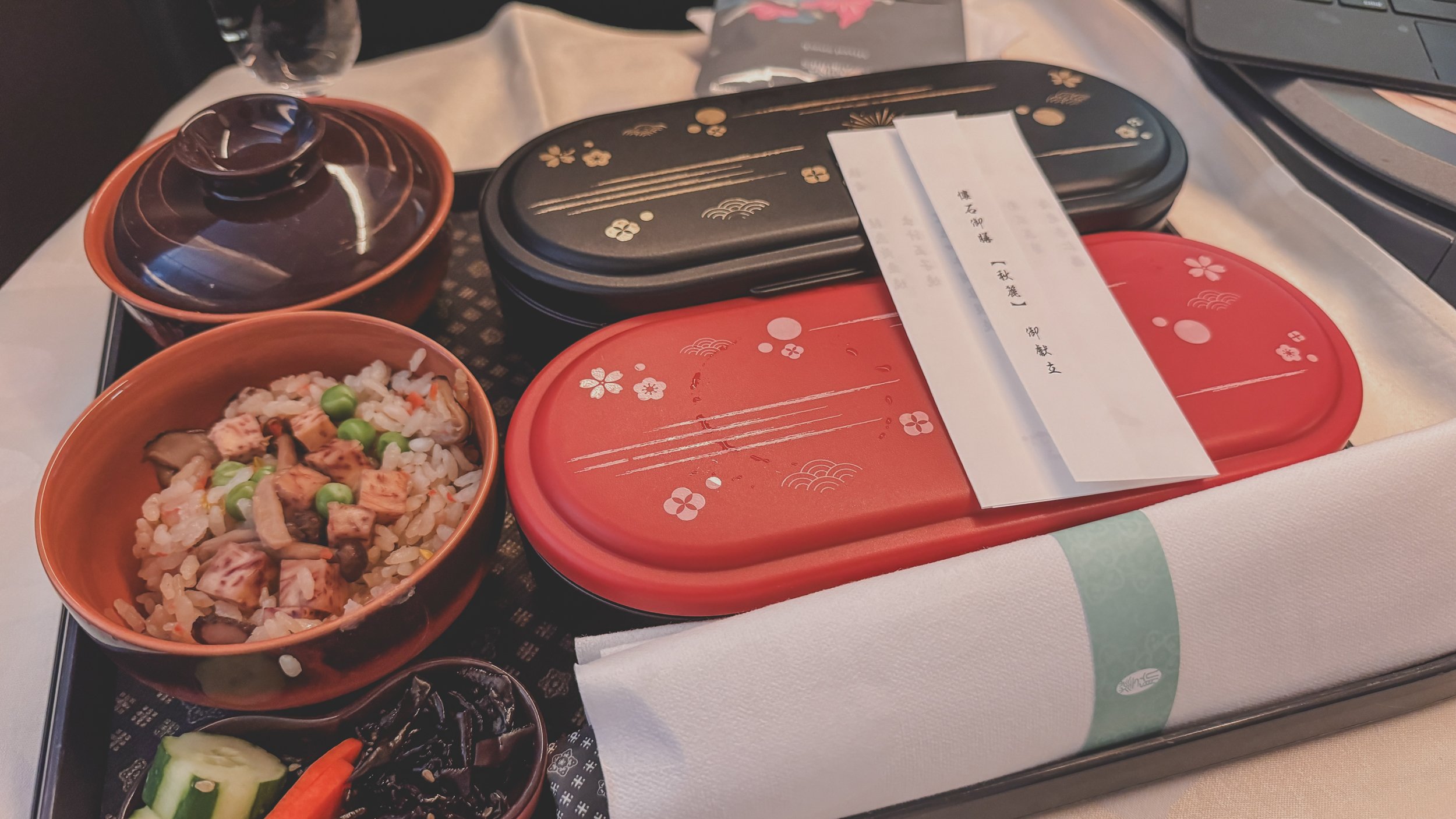
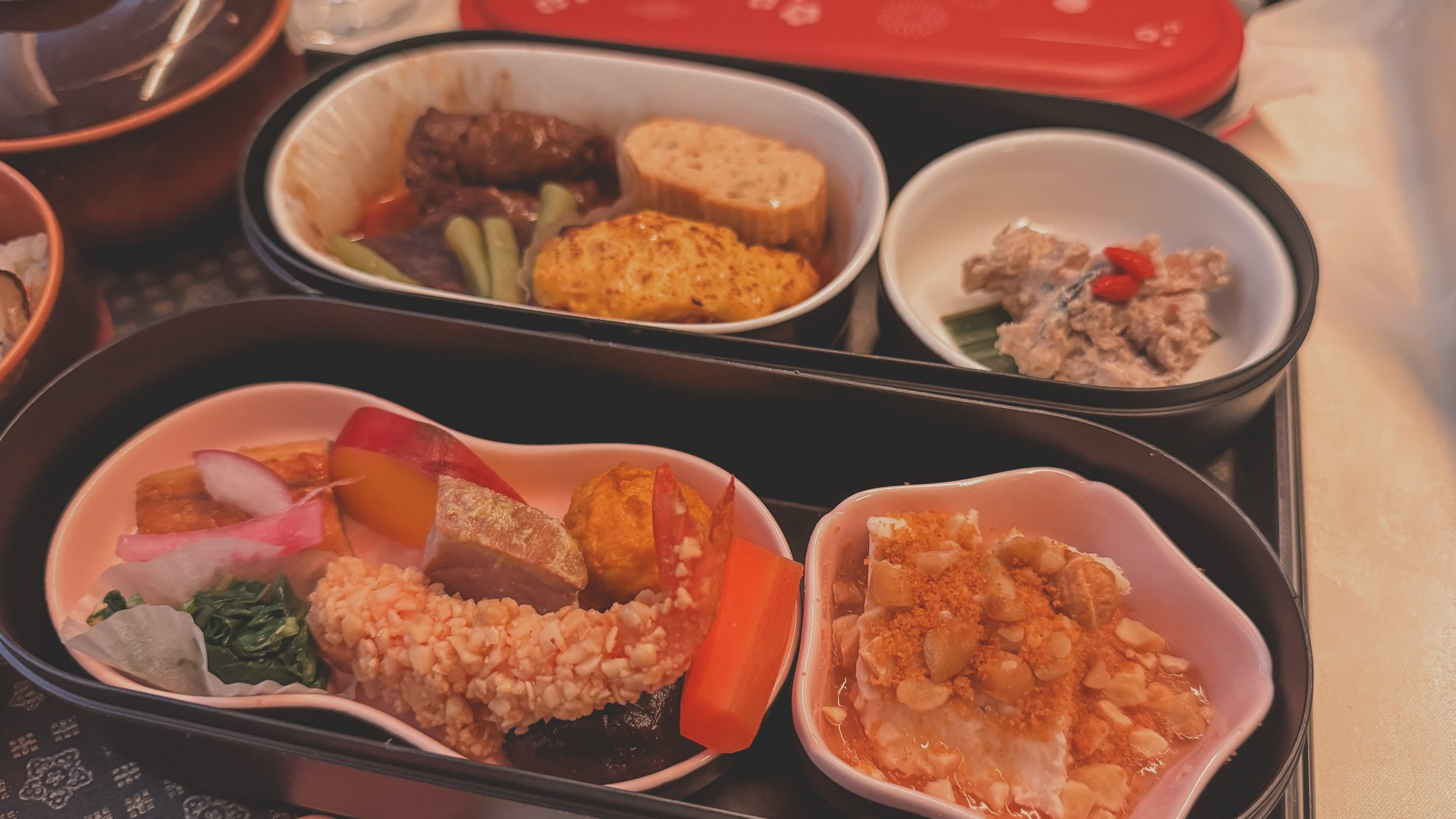
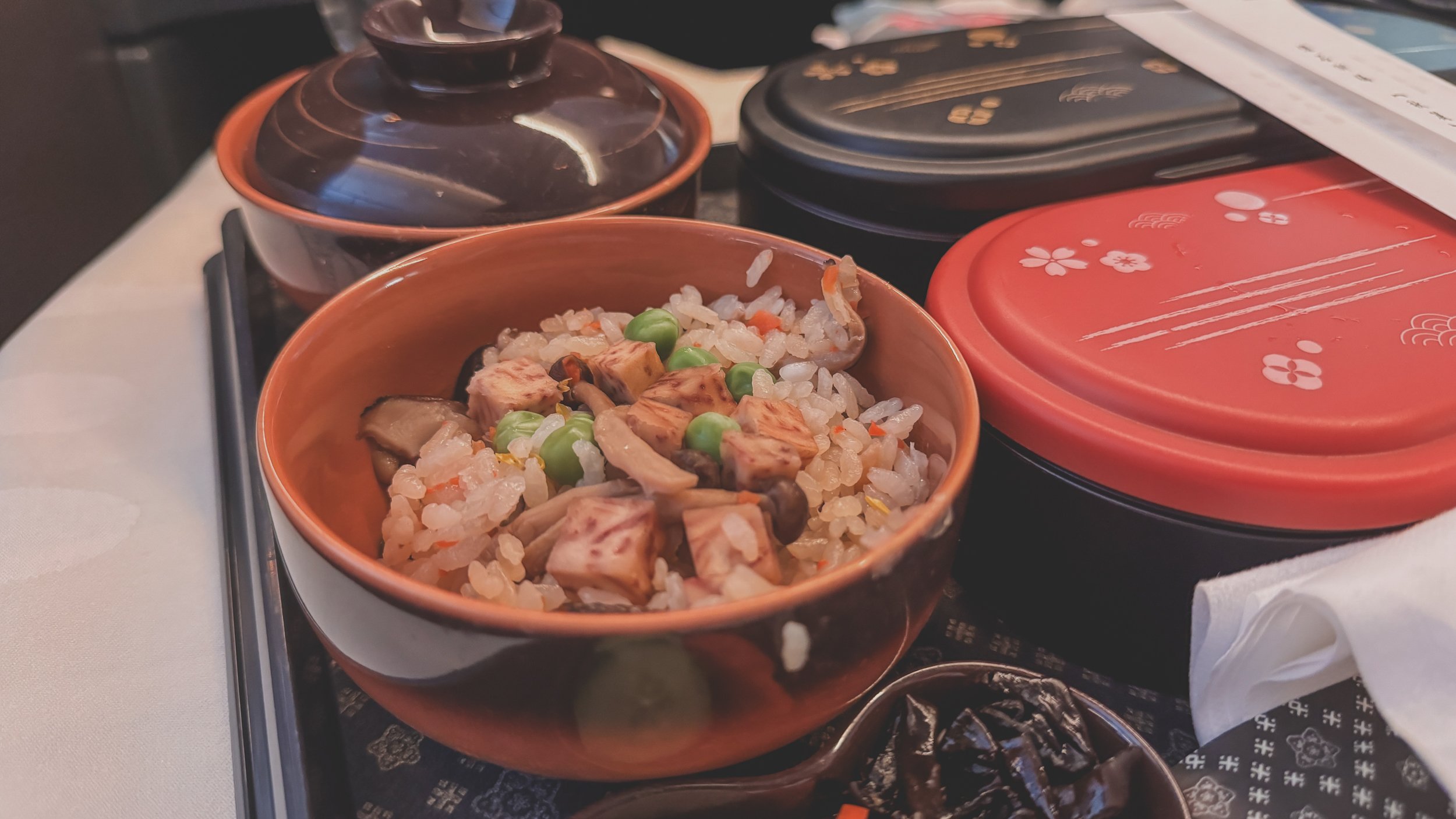
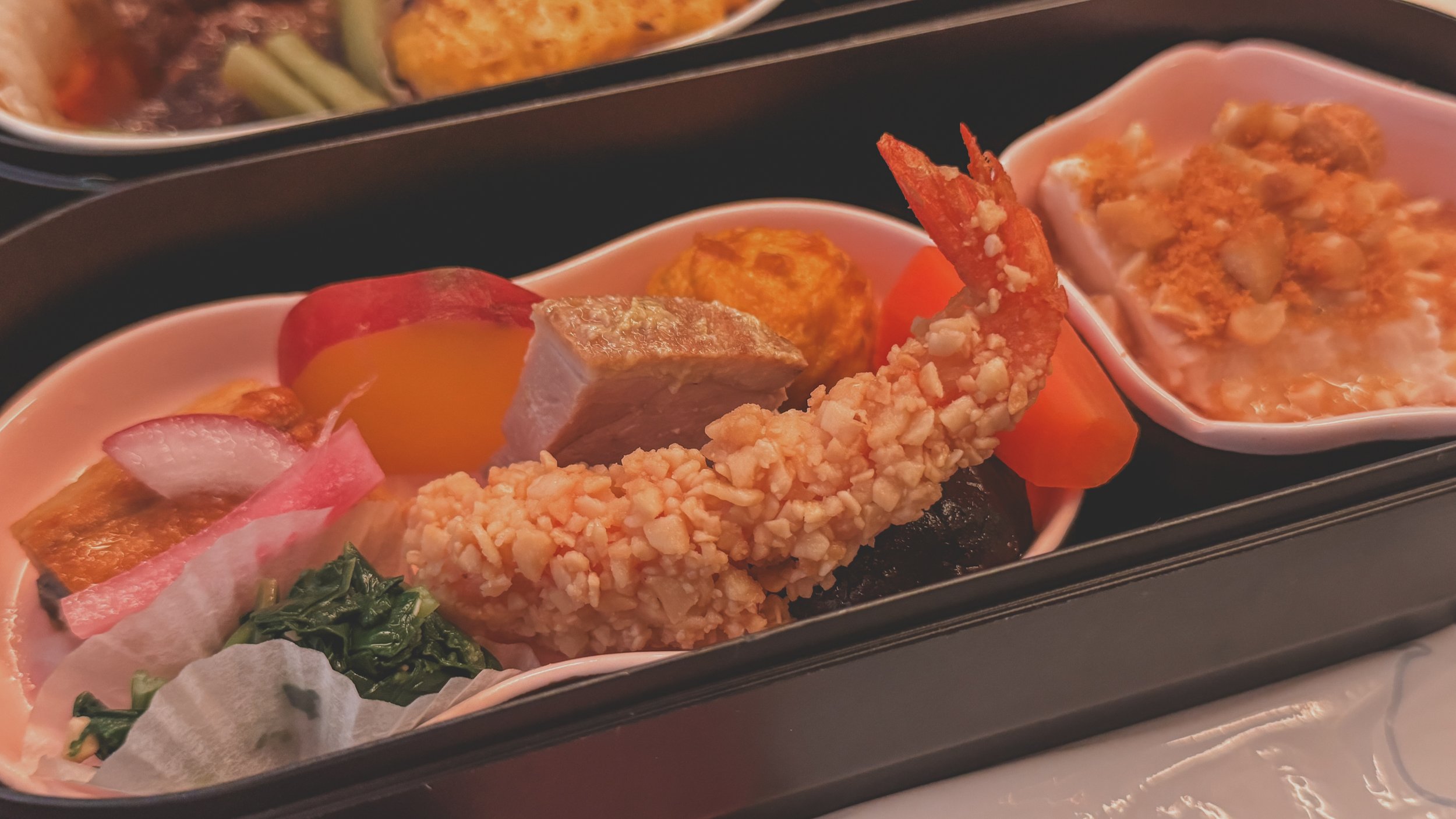
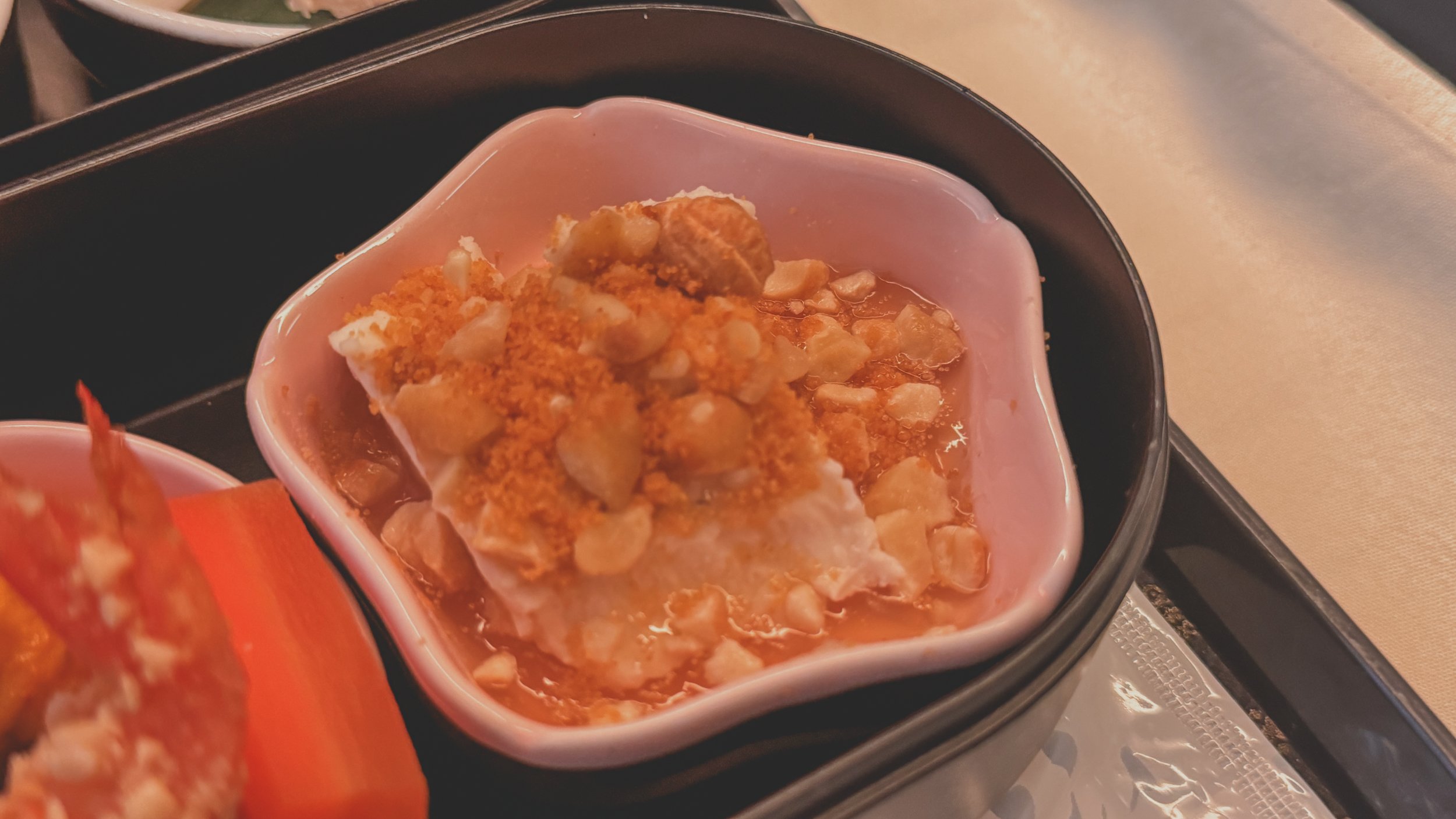
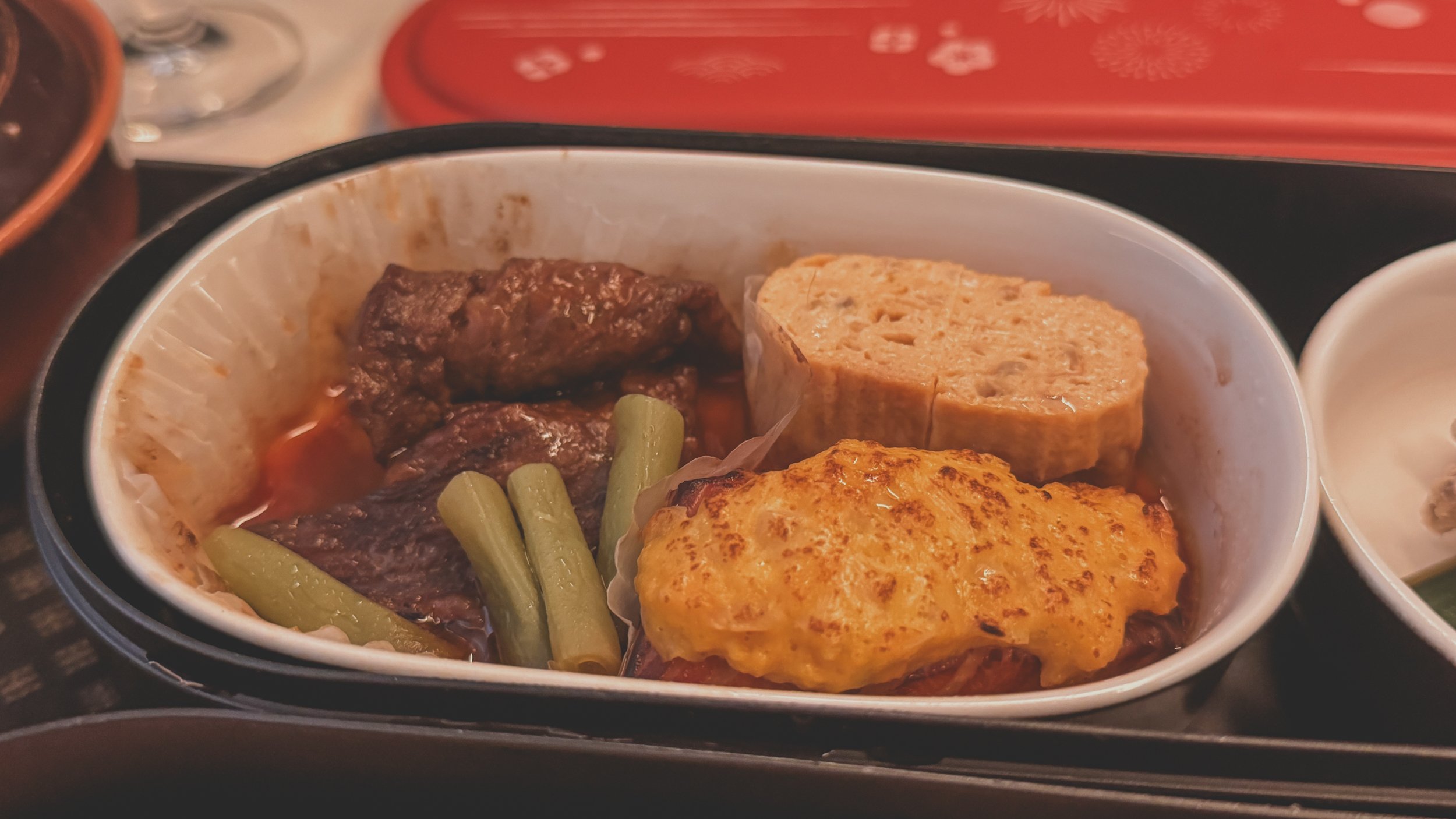
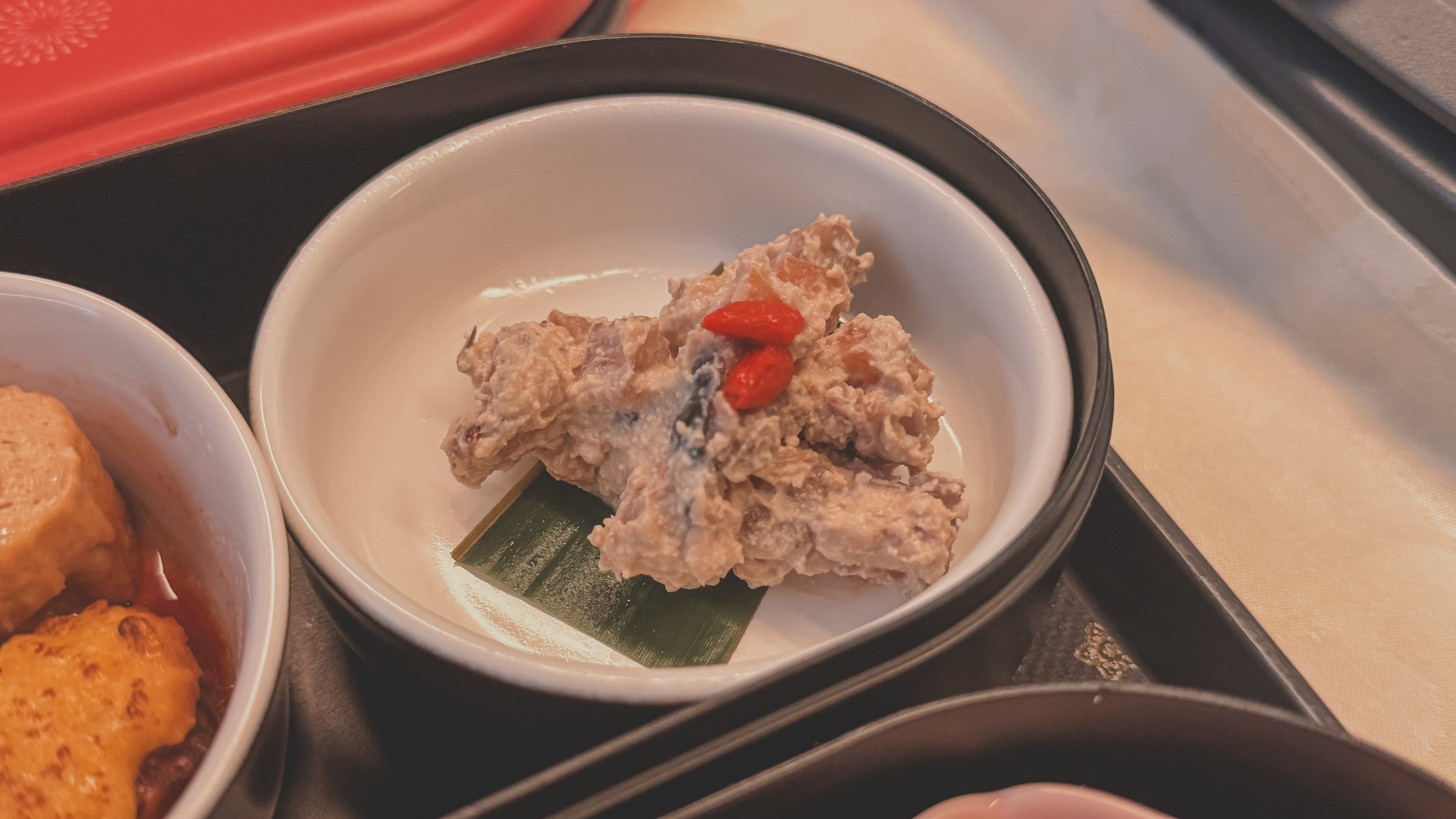
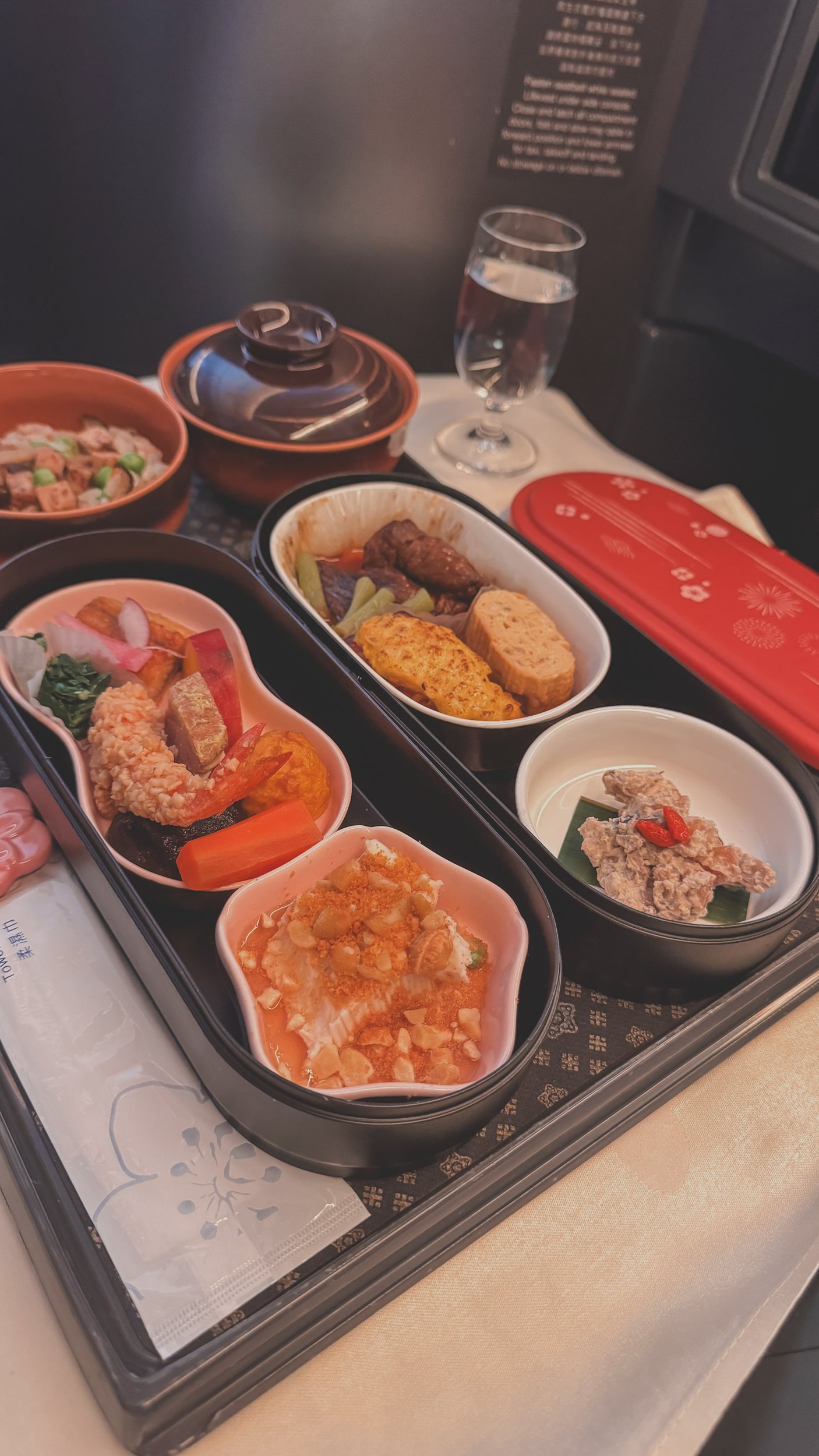
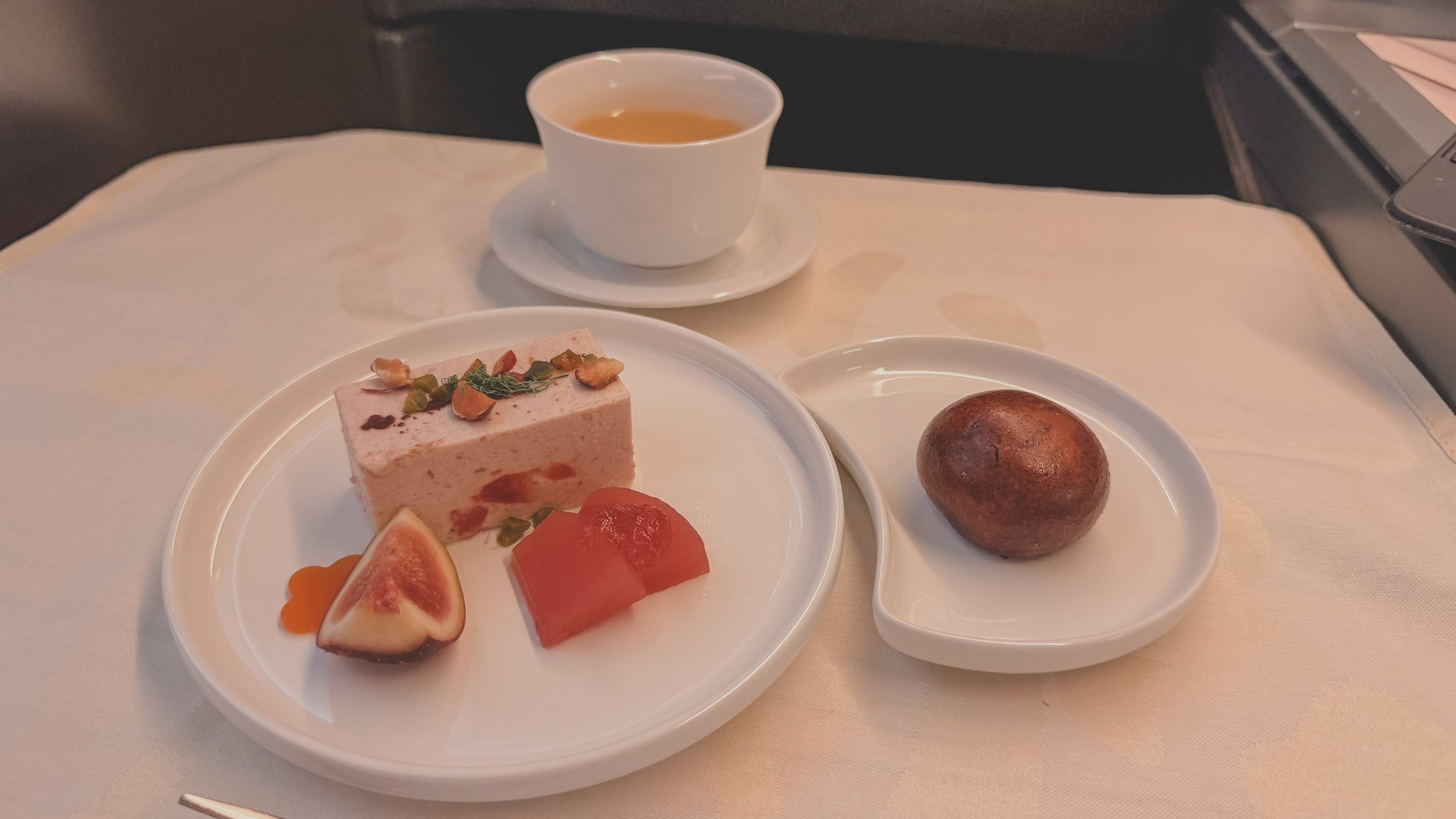
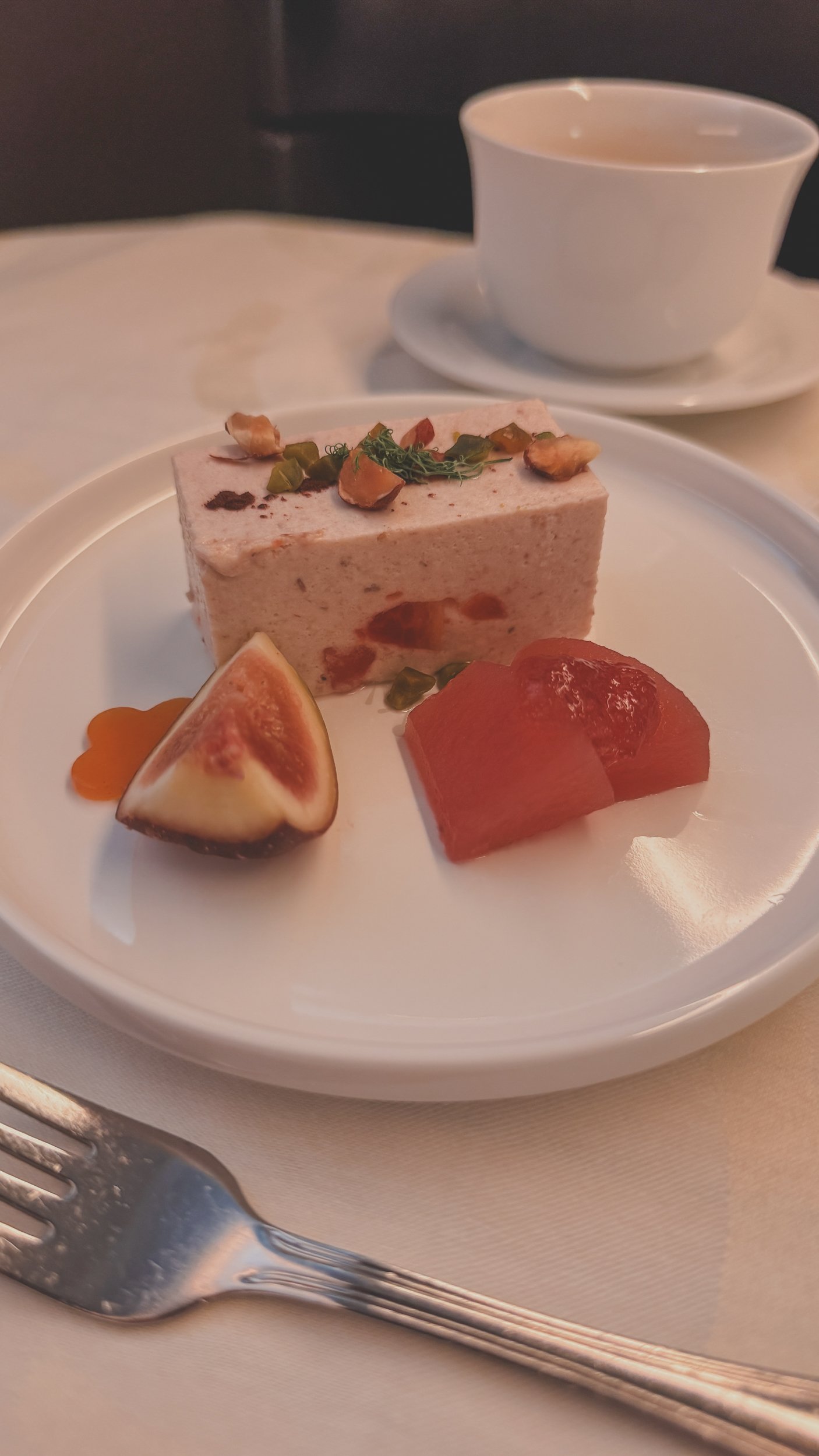
Conclusion | China Airlines
Even with a short flight from Taiwan to Japan, China Airlines continues to impress with their hard and soft product. With a stylish cabin, delicious in-flight food & beverage, and a great stewardess service, this is fantastic redemption method for those with Delta Skymiles. For only 35,000 Delta Skymiles and approx. $15 USD, you can enjoy a 3 hour business class flight to and from Japan and Taiwan, which is absolutely well worth the points and spend.




